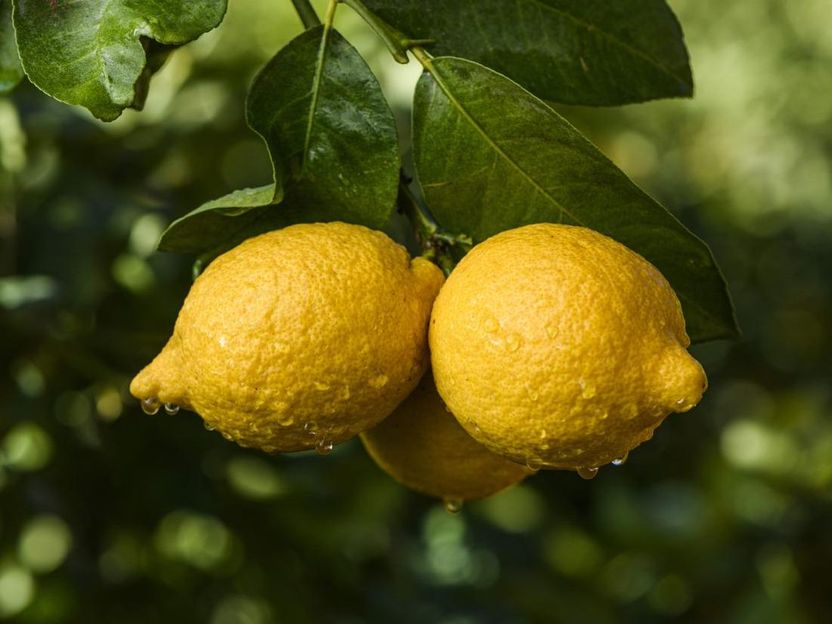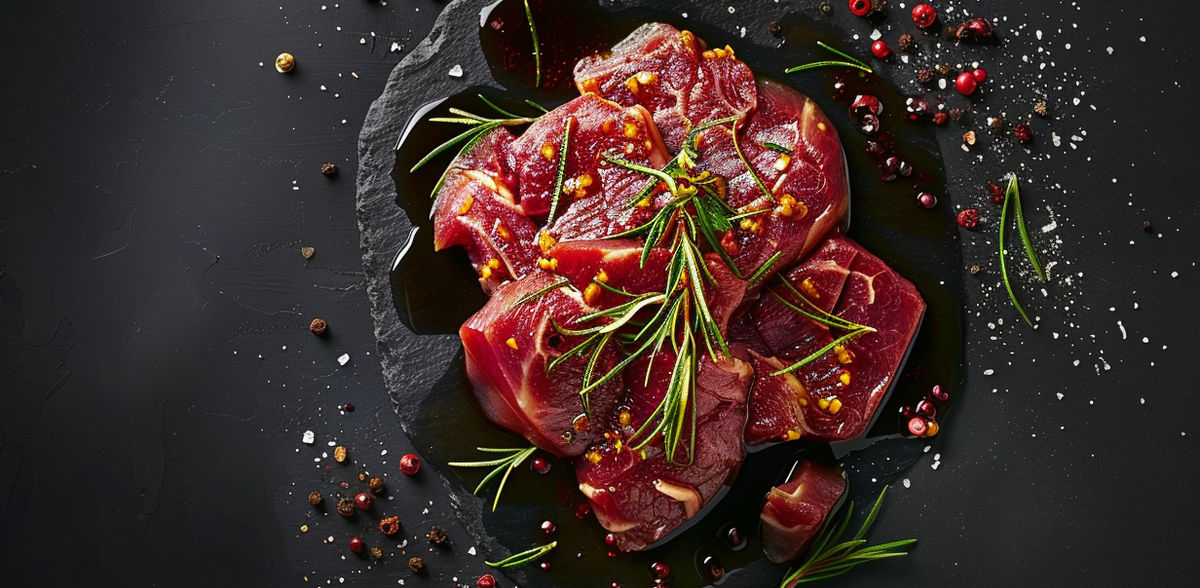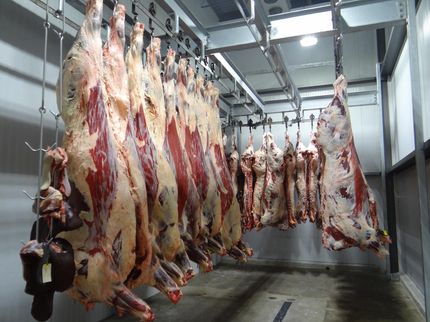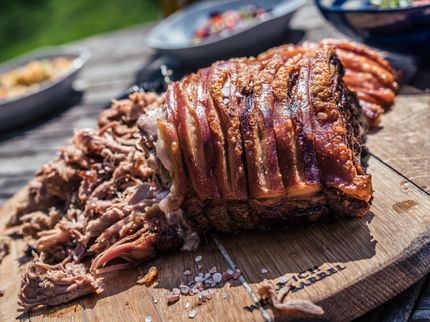New breakthrough in plant-based meat: Realistic fat marbling achieved
Researcher awarded grant from Good Food Institute to bridge the gap between plant protein and lipids
One of the challenges of creating realistic-looking and delectable plant-based meat is mimicking the marbled effect of animal fat that many carnivores expect and enjoy.

Lutz Grossman is an assistant professor of food science at UMass Amherst.
UMass Amherst
A University of Massachusetts Amherst food scientist has a plan to tackle this quandary by developing new technology supported by a $250,000 grant from the Good Food Institute. The not-for-profit think tank promotes plant-based alternatives to meat, dairy and eggs, as well as cultivated “clean meat” grown from animal cells in a facility.
The technology proposed by Lutz Grossmann, an assistant professor, “has the potential to revolutionize the plant-based meat industry, expanding its product offerings and appealing to a wider audience,” the institute stated in announcing the grant, one of 118 awarded in 21 countries, totaling more than $21 million, since 2019.
“The Good Food Institute has played a key role in supporting research for more sustainable food options, and UMass Food Science has been fortunate to receive funding,” Grossmann says. In 2020, a team of UMass Amherst food scientists, led by Distinguished Professor David Julian McClements, received a grant from the institute to develop a new approach for creating tasty, plant-based, protein-rich food that’s similar in texture to whole chicken, pork or beef.
Grossmann, whose research focuses on designing holistic approaches to increase the consumption of plant- and microbial protein-rich foods, aims to incorporate lipids into high-moisture extrusion processes, a technique used to replicate the juiciness, appearance and texture of whole-muscle animal meat.
“While high-moisture extrusion has become a primary method for creating meat-like textures from plant proteins, it currently lacks the ability to generate lipid marbling, a key characteristic for replicating the appearance, flavor and texture of traditional meat products,” Grossmann explains. “The challenges of incorporating lipids into high-moisture extrusion processes are mainly related to the lubricating effect of plant lipids that disrupt the protein melt within the extruder barrel.”
In addition, injecting lipids during the cooling part of the process – when the meat-like structure is finalized – results in uneven distribution, leading to suboptimal texture, he adds.
To overcome these challenges and bridge the gap between plant proteins and lipids, Grossmann is developing and will implement a novel extrusion segment that will facilitate the creation of the marbled appearance and texture of plant-based whole-cut meat products.
“The setup basically works like a piping bag that allows for making a two-colored swirl,” Grossmann says.
Most read news
Other news from the department science

Get the food & beverage industry in your inbox
By submitting this form you agree that LUMITOS AG will send you the newsletter(s) selected above by email. Your data will not be passed on to third parties. Your data will be stored and processed in accordance with our data protection regulations. LUMITOS may contact you by email for the purpose of advertising or market and opinion surveys. You can revoke your consent at any time without giving reasons to LUMITOS AG, Ernst-Augustin-Str. 2, 12489 Berlin, Germany or by e-mail at revoke@lumitos.com with effect for the future. In addition, each email contains a link to unsubscribe from the corresponding newsletter.
Most read news
More news from our other portals
Last viewed contents

Planted Launches first-of-its-kind fermented Steak & Expands Production - The better steak: 97% less CO₂e than its animal counterpart






























































